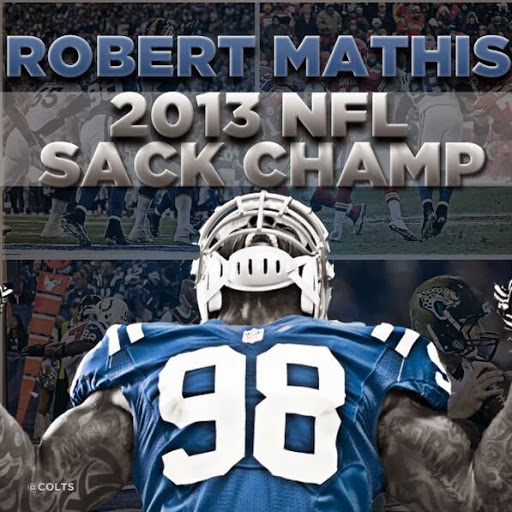Stephen A Callahan
age ~63
from Navarre, FL
- Also known as:
-
- Stephen Anthony Callahan
- Stephen H Callahan
- Steven A Callahan
- Stephanie R Callahan
- Steve A Callahan
- Stephan Callahan
Stephen Callahan Phones & Addresses
- Navarre, FL
- Laramie, WY
- 3317 Hawes Rd, Mesa, AZ 85207 • (480)9866155 • (928)4764431
- 3530 Hawes Rd, Mesa, AZ 85207 • (480)9866155
- 4057 Silver Ridge Cir, Mesa, AZ 85207 • (480)9866155
- Marsland, NE
- Mitchell, NE
- Crawford, NE
- Pembroke, MA
- Springfield, VA
- Laurel Hill, FL
Medicine Doctors

Stephen T. Callahan
view sourceSpecialties:
Adolescent Medicine
Work:
Vanderbilt Childrens Adolescent
719 Thompson Ln STE 36300, Nashville, TN 37204
(615)9367000 (phone), (615)8750267 (fax)
719 Thompson Ln STE 36300, Nashville, TN 37204
(615)9367000 (phone), (615)8750267 (fax)
Education:
Medical School
University of Arkansas College of Medicine at Little Rock
Graduated: 1994
University of Arkansas College of Medicine at Little Rock
Graduated: 1994
Procedures:
Electrocardiogram (EKG or ECG)
Hearing Evaluation
Vaccine Administration
Hearing Evaluation
Vaccine Administration
Conditions:
Abnormal Vaginal Bleeding
Acute Renal Failure
Acute Upper Respiratory Tract Infections
Anorexia Nervosa
Anxiety Dissociative and Somatoform Disorders
Acute Renal Failure
Acute Upper Respiratory Tract Infections
Anorexia Nervosa
Anxiety Dissociative and Somatoform Disorders
Languages:
English
Description:
Dr. Callahan graduated from the University of Arkansas College of Medicine at Little Rock in 1994. He works in Nashville, TN and specializes in Adolescent Medicine. Dr. Callahan is affiliated with Monroe Carell Jr Childrens Hospital At Vanderbilt.
Name / Title
Company / Classification
Phones & Addresses
President
PHOENIX MONARCHS ALUMNI ASSOCIATION OF PHOENIX, ARIZONA, PHO
PO Box 20491, Phoenix, AZ 85036
415 E Grant St, Phoenix, AZ 85004
415 E Grant St, Phoenix, AZ 85004
Principal
Callahan Ranch
General Animal Farm
General Animal Farm
241 Tall Pne Rd, Crawford, NE 69339
Senior Software Engineer
The University of Phoenix Inc
College/University
College/University
3157 E Elwood St, Phoenix, AZ 85034
(602)3877000
(602)3877000
Principal
Callahan, Stephen & Assoc
Business Services
Business Services
364 E Baylor Ln, Gilbert, AZ 85296
(480)6202242
(480)6202242
HIGHER CARE ASSISTED LIVING HOME, LLC
Pmb 478, Phoenix, AZ 85016
3334 E Birchwood Pl, Chandler, AZ 85249
3334 E Birchwood Pl, Chandler, AZ 85249
Us Patents
-
Hybrid Resistance Cards And Methods For Manufacturing Same
view source -
US Patent:53647050, Nov 15, 1994
-
Filed:Jun 25, 1992
-
Appl. No.:7/904331
-
Inventors:Stephen A. Callahan - Mesa AZ
-
Assignee:McDonnell Douglas Helicopter Co. - Mesa AZ
-
International Classification:B32B 900
-
US Classification:428601
-
Abstract:A hybrid resistance card (R-Card) is manufactured using a two-step process wherein an electrically conductive ink layer and an electrically resistive ink layer are printed onto a surface, which may be either a substrate or the part on which the R-Card is to be used. The conductive ink layer is selectively applied in a pattern of shapes to electrically short out portions of the resistive ink layer, thereby permitting the R-Card to have a predetermined resistive taper across its width according to a desired resistivity curve. The resistive ink layer comprises grid-like lines bordering and separating the conductive shapes. The resistive taper is substantially continuous along the length of the R-Card, at least linearly, though if the card is designed to cover an entire part, it is substantially continuous along a plurality of directions on the card, with the tapers being designed to round into one another. The inventive process permits much greater uniformity and predictability of result, as well as producing a much more versatile card, and is also much less expensive than currently employed processes.
-
Hybrid Resistance Cards And Methods For Manufacturing Same
view source -
US Patent:54941806, Feb 27, 1996
-
Filed:Sep 26, 1994
-
Appl. No.:8/312282
-
Inventors:Stephen A. Callahan - Mesa AZ
-
Assignee:McDonnell Douglas Helicopter Company - Mesa AZ
-
International Classification:H01C 1010
-
US Classification:216 16
-
Abstract:A hybrid resistance card (R-Card) is manufactured using a two-step process wherein an electrically conductive ink layer and an electrically resistive ink layer are printed onto a surface, which may be either a substrate or the part on which the R-Card is to be used. The conductive ink layer is selectively applied in a pattern of shapes to electrically short out portions of the resistive ink layer, thereby permitting the R-Card to have a predetermined resistive taper across its width according to a desired resistivity curve. The resistive ink layer comprises grid-like lines bordering and separating the conductive shapes. The resistive taper is substantially continuous along the length of the R-Card, at least linearly, though if the card is designed to cover an entire part, it is substantially continuous along a plurality of directions on the card, with the tapers being designed to round into one another. The inventive process permits much greater uniformity and predictability of result, as well as producing a much more versatile card, and is also much less expensive than currently employed processes.
Resumes

Stephen L Callahan
view sourceIndustry:
Financial Services
Work:
Callahan & Callahan Asset Management
Investment Advisor
Investment Advisor
Education:
U. S. Naval Academy

Stephen Callahan
view source
Stephen Callahan
view source
Stephen Callahan
view sourceLocation:
United States
Youtube
Myspace
Plaxo

Stephen Callahan
view sourceSalem, NHP&D Truck Driver at Old Dominion Freight Line

Stephen R Callahan
view sourceBealeton, VA
Flickr

Stephen Callahan
view source
Stephen Joseph Callahan
view source
Stephen Callahan
view source
Stephen Clutch Callahan
view source
Steve Callahan
view source
Stephen B. Callahan
view source
Stephen Callahan
view source
Stephen W Callahan
view sourceGoogleplus

Stephen Callahan

Stephen Callahan

Stephen Callahan

Stephen Callahan

Stephen Callahan

Stephen Callahan

Stephen Callahan

Stephen Callahan
Classmates

Stephen Callahan
view sourceSchools:
Armstrong High School Armstrong IA 1962-1966
Community:
Heidi Pfeil, Cathi Colston

Stephen Callahan
view sourceSchools:
St. John Vianney High School Richmond VA 1963-1967
Community:
James Dougherty, Tom Lee

Stephen Callahan
view sourceSchools:
Browerville High School Browerville MN 1973-1977
Community:
Rita Frank, Melodie Rone, James Worden

Stephen Callahan
view sourceSchools:
Hastings High School Hastings-on-hudson NY 1971-1975
Community:
Charles Chuck, John Fischer, Catherine Flaherty

Stephen Callahan
view sourceSchools:
Shidler High School Shidler OK 1961-1965
Community:
Julia Maltby, Leb Williams, Gayle Barnes, Lenda Ware, Patricia Truax, Ray Smith, Sheryl Stierwalt, Darlene Adams, Connie Zink, Marlene Robinson, Patricia Oestmann

Collingswood High School,...
view sourceGraduates:
Stephen Callahan (1975-1978),
Thomas Edwards (1960-1964),
Michele Hearey (1973-1977),
Dolores Kocher (1969-1973)
Thomas Edwards (1960-1964),
Michele Hearey (1973-1977),
Dolores Kocher (1969-1973)

St. John Vianney High Sch...
view sourceGraduates:
Stephen Roscher (1967-1971),
Stephen Callahan (1963-1967)
Stephen Callahan (1963-1967)

University of Massachuset...
view sourceGraduates:
Steve Consiglio (1966-1971),
Stephen Callahan (1975-1978),
Meaghan Dougherty (1997-2001)
Stephen Callahan (1975-1978),
Meaghan Dougherty (1997-2001)
Get Report for Stephen A Callahan from Navarre, FL, age ~63

















